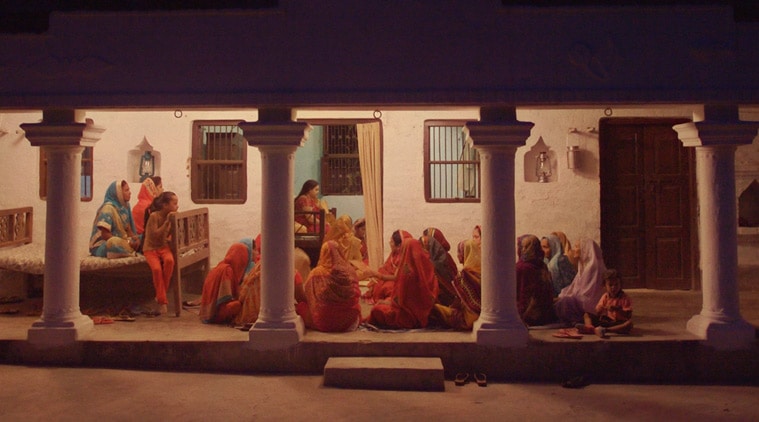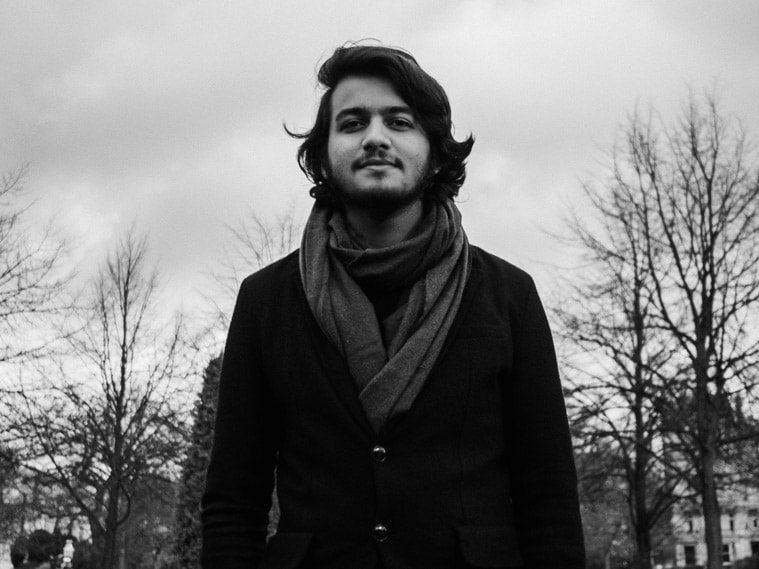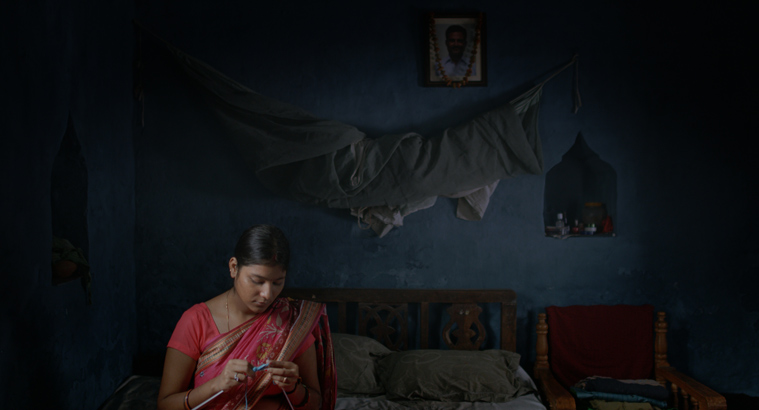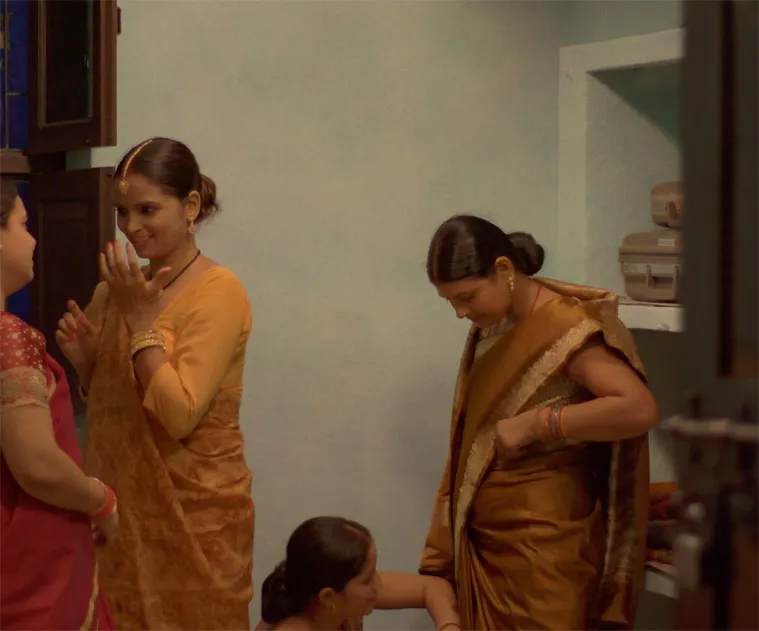 A still from Achal Mishra’s Gamak Ghar.
A still from Achal Mishra’s Gamak Ghar.
For a 23-year-old who has spent most of his life in boarding schools, rented accommodations and even in another country while his parents kept shifting houses, what signifies ‘home’ and gives a sense of permanency associated with it? The home, among the many places Achal Mishra lived in over the years, that evokes this feeling of belongingness is the one built by his great grandfather in the 50s in Madhopur village, 5 km from Bihar’s Darbhanga.
It’s in this humble house — with a verandah with a row of pillars — that his grandparents lived. During his growing up years, there was always the excitement of the family coming together in this house, which Mishra fondly refers to as daadi ka ghar, during annual Chhath Puja and various other celebrations. Yet, his ancestral home hadn’t witnessed many activities nor received many visitors till Mishra, a self-taught filmmaker, decided to make it the focus of his debut feature, Gamak Ghar, which means ‘village home’.
An intimate portrait of how life in joint families used to be, Gamak Ghar was driven by Mishra’s observations and attention to detail. The feature film is imbued with nostalgia. Across two decades, three generations of a family come together and drift away while the house grows older, needing care and repair. Gamak Ghar, which premiered during the MAMI Mumbai Film Festival in 2019 and later selected in the NFDC’s Film Bazaar Recommends section, is a fine example of indie cinema shedding light on the less-explored aspects of the contemporary society. The movie is now streaming on MUBI India for a month.
 An intimate portrait of how life in joint families used to be, Gamak Ghar was driven by Achal Mishra’s observations and attention to detail.
An intimate portrait of how life in joint families used to be, Gamak Ghar was driven by Achal Mishra’s observations and attention to detail.
About three years ago, Mishra heard his mother suggest pulling down a portion of the village house and building a two-storied structure. He was then living with his parents in Darbhanga, after he dropped out of the Film Studies course from King’s College London. That’s when he thought of shooting a feature film on the village house before renovations. At that time, he used to move about Darbhanga with his DSLR. Though these outings had resulted in a couple of short films, he was not too proud of them. “I was making movies with whatever was available. That approach of working with restrictions came handy when I started working on my first feature film,” he says.
To decide on the structure and treatment of Gamak Ghar, a film in Maithali, Mishra went over his personal experiences, snatches of conversations he had overheard, photographs from family album and festivities he had witnessed while growing up. The memories of the family coming together for someone’s mundan, marriage, and other celebrations seeped into the story. “Since I was making a film in this particular family space, I wanted it to be organic. While writing it, it first came as a stream of memory. I gave it a structure in my next draft. Once the characters were in place, I created their fictional trajectory,” says Mishra.
 To decide on the structure and treatment of Gamak Ghar, Mishra went over his personal experiences, snatches of conversations he had overheard, photographs from family album and festivities he had witnessed while growing up.
To decide on the structure and treatment of Gamak Ghar, Mishra went over his personal experiences, snatches of conversations he had overheard, photographs from family album and festivities he had witnessed while growing up.
The film, roughly divided into three parts, shows the family coming together to celebrate the birth of a new member. Years later when they meet again during Chhath Puja, the children are now teenagers, and the brothers have drifted apart, while the house has seen wear and tear. In the final segment, the house remains desolate, almost abandoned, rarely visited by the family, who are busy with their lives. “Initially, it was difficult to make the team understand what kind of a film I was making. It didn’t want it to have a typical narrative. I was inspired by Amit Chaudhuri’s writing, especially his first novel A Strange and Sublime Address, the way it has these little moments. In 2018, I heard Chaudhuri and filmmaker Gurvinder Singh speak during a symposium called ‘Against Storytelling’ where the latter talked about cinema being a visual experience,” says Mishra. The film was shot in four schedules, spanning eight months, from June 2018 to January 2019.
Yet, as expected, not everything went as planned. “I had written the film’s first part, complete with dialogues and scenes, on paper. During the shoot, I realised some scenes were not working and we had to let go of those. Most of the members of my cast were non-actors and they didn’t sound natural delivering the lines that were written for them. So, we started improvising,” says Mishra.
 The film, roughly divided into three parts, shows the family coming together to celebrate the birth of a new member.
The film, roughly divided into three parts, shows the family coming together to celebrate the birth of a new member.
Family photographs played a significant role in Gamak Ghar’s pre-production process. They served as references for the look and feel of the film, its costumes and props. “There were some photos, which I really loved which I have recreated in the film. For instance, there’s this beautiful photo of my mother, my bua and two cousins. They are helping each other with saris,” says Mishra.
Initially¸ Mishra’s plan was to shoot the film’s last scene when the house is being broken down for real. As they began shooting, the house became more important than the film. “The house came alive for me. I discovered so many things about my late grandfather Kedar Nath Mishra, who was a well-known writer. Even though we have shown the house being broken down, we only took out some tiles. The very next day, we fixed that and got the house repaired. While shooting the last scene, I found myself being very protective about the house and didn’t want it to be damaged in any way,” says Misra.
The family has now dropped the plan of demolishing the ancestral house. The caretaker Nathuni, who has been with the family almost as long as the house has existed, continues to live there. Mishra stops there for some time whenever he is passing by. The house and the many memories associated with it are now captured in a 90-minute feature forever.